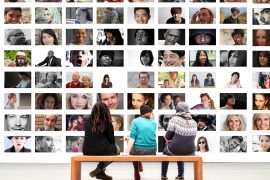Inclusive assessment in higher education refers to the design and implementation of assessment practices that accommodate the diverse learning needs, backgrounds, and abilities of all students (Ajjawi et al, 2023). The aim is to ensure that assessment methods are fair, equitable, and accessible to every student, regardless of their individual differences. Inclusive assessment approaches promote a learner-centered environment that fosters engagement, encourages diverse perspectives, and supports the development of essential skills and knowledge. Strategies for inclusive assessment may involve offering multiple modes of assessment, providing flexibility in deadlines, using clear and unambiguous language, and offering opportunities for students to demonstrate their understanding in different ways (Tai et al, 2021).
Often, when we think about inclusive assessment, we think of operational initiatives such as academic plans, exam adjustments, or special consideration. However, it’s important to realise that simply implementing adjustments and academic plans is often not enough to guarantee inclusivity for all students. During the recent period where almost all assessment was conducted remotely and online, such adjustments were added uniformly but failure rates for students living with a disability increased as did the gap in achievement compared to other students. Coordinators at Sydney can investigate this gap using the “Knowing your unit” report. Clearly, introducing flexibility in location and technically accounting for the difference in the time taken to complete an assessment are not sufficient.
Practices like granting extra time for assignments, facilitating separate rooms for examinations, and developing individualised academic plans are regularly used strategies. While undoubtedly important for students who need them, they can sometimes create an unintended dichotomy: segregating the ‘normal’ learning procedures from the ‘alternative’ ones. This runs the risk of perpetuating the very exclusion they are meant to address (Nieminen, 2022). The focus should not simply be on providing alternate modifications. Instead, it’s important to design learning and assessment procedures that are naturally flexible and inclusive for everyone.
True inclusivity in assessment demands a reconsideration of our conventional understanding of academic achievement and intelligence. It necessitates an expanded definition that incorporates diverse perspectives and abilities, removing the reliance on ‘special consideration’ to facilitate access for certain groups of students. It encourages the growth of a learning environment that supports all learners from the start, rather than requiring individual adjustments to be made retroactively.
True inclusive assessment, therefore, goes beyond traditional accommodations and adjustments. It controversially suggests that real change lies in reformulating our relationships with learning and assessment (our epistemological and pedagogical beliefs), rather than simply adding, modifying, or retrofitting the existing procedures. Universal Design for Learning (UDL) is a framework that can be used to guide such an approach to inclusive assessment design. Putting UDL into practice starts with a mindset that embraces diversity as the norm and intentionally designs for it so that all students may flourish. But this is more than a mindset. A new requirement for higher education providers to have and comply with a Support for Students Policy is currently before Parliament and new assessment principles are being developed for the University.
The proposed legislation ensures that students at risk of failing their courses are identified, and students, particularly equity students, are properly supported to study successfully.
How do I start to design for diversity?
The UDL guidelines can at first seem overwhelming so we have devised five simple steps to guide your thinking and to get you started on your designing for diversity journey. The idea is not to prescribe or standardise how UDL is used, rather to foster a shift in mindset that will evolve from your own experience of identifying and removing barriers in the learning environments you create. This process is not intended to be lock-step and our advice is to start small and develop and test your ideas over time as illustrated in the article Rethinking assessment design one more step at a time. As you start to see the impact of intentionally designing for the diversity in your cohorts, we encourage you to share your stories with us. Here are some stories of how these steps are already being applied in assessment design.

5 steps to support designing for diversity
Creating inclusive assessments in general involves a holistic approach that considers the diverse needs, backgrounds, and abilities of all learners. Here are some questions that you can ask yourself when designing assessments to ensure inclusivity:
- Are the assessment instructions clear and accessible? Consider whether the language used is easily understandable for all students, avoiding jargon and ambiguous terms.
- Do the assessment materials represent diverse perspectives and cultures? Ensure that the content and examples used in the assessment are inclusive and do not marginalise any particular group.
- Are there multiple modes of assessment? Provide options for students to demonstrate their understanding in different ways, such as written responses, oral presentations, or creative projects.
- Have I considered students with disabilities or learning differences? Take into account the needs of students with disabilities by providing appropriate accommodations, such as extra time, accessible formats, or assistive technologies.
- Is the assessment free from bias and stereotypes? Review the questions and content to identify and eliminate any potential bias or stereotypes that could disadvantage certain groups.
- Do the assessment criteria align with the learning objectives? Ensure that the assessment measures what it intends to assess and aligns with the course learning outcomes.
- Have I sought feedback from students? Collect input from students about the assessment design and format to understand their perspectives and make necessary improvements.
- Are the assessment resources and materials affordable and accessible to all students? Consider the financial implications of assessment resources and offer alternative options if needed.
- Does the assessment encourage critical thinking and creativity? Design assessments that stimulate diverse perspectives and allow students to express their ideas authentically.
- Have I incorporated opportunities for self-assessment and reflection? Provide students with opportunities to assess their own learning progress and provide feedback on their strengths and areas for improvement.
- Is the assessment culturally relevant and relatable? Consider the cultural context of the assessment to ensure that it is meaningful and engaging for all students.
- Have I considered the potential impact of language barriers? Be mindful of language challenges that non-native speakers may face and provide support or alternatives if necessary.
By asking these questions and being mindful of inclusivity, it is possible to create assessments that are more equitable, supportive, and beneficial to all students in the learning process.
Looking for more ideas or support?
- Check out our Designing for Diversity Canvas resource for examples of colleagues putting UDL into practice and links to connect with our growing community of practice
- Book a 30 minute Designing for Diversity consult
- Book into a 90 minute Designing for Diversity workshop
- UDL Tips for Assessments
- UDL and Assessment
*Coordinators can view the variation in failure rate over time using the ‘Knowing your unit’ tab in the ‘Knowing Your Students‘ report. On the report, search and select the unit of study code and then use the dropdown in the “Success by attributes” figure to select the cohort of interest.





